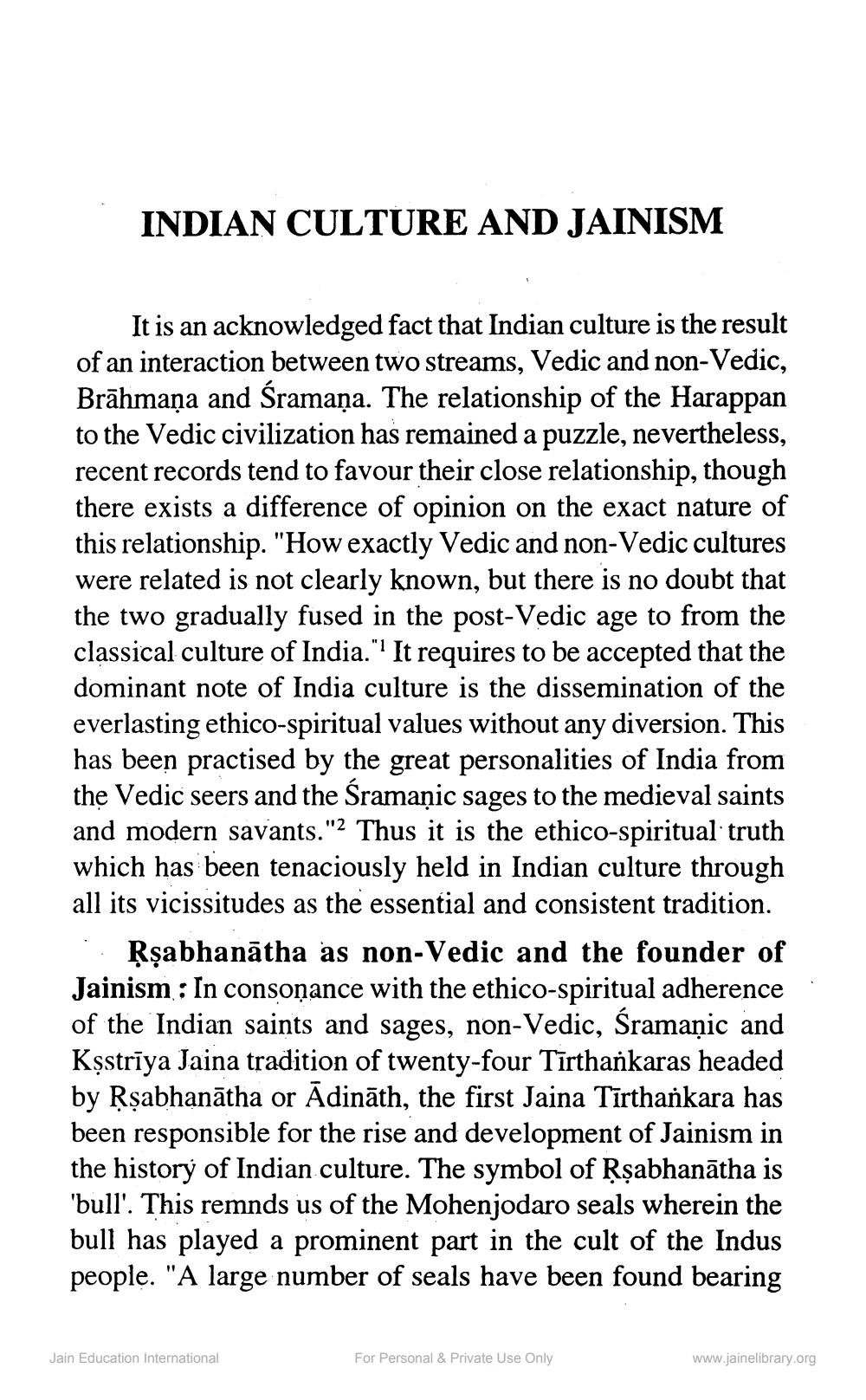________________
INDIAN CULTURE AND JAINISM
It is an acknowledged fact that Indian culture is the result of an interaction between two streams, Vedic and non-Vedic, Brāhmana and Śramaņa. The relationship of the Harappan to the Vedic civilization has remained a puzzle, nevertheless, recent records tend to favour their close relationship, though there exists a difference of opinion on the exact nature of this relationship. "How exactly Vedic and non-Vedic cultures were related is not clearly known, but there is no doubt that the two gradually fused in the post-Vedic age to from the classical culture of India." It requires to be accepted that the dominant note of India culture is the dissemination of the everlasting ethico-spiritual values without any diversion. This has been practised by the great personalities of India from the Vedic seers and the Śramanic sages to the medieval saints and modern savants."2 Thus it is the ethico-spiritual truth which has been tenaciously held in Indian culture through all its vicissitudes as the essential and consistent tradition.
Rşabhanātha as non-Vedic and the founder of Jainism : In consonance with the ethico-spiritual adherence of the Indian saints and sages, non-Vedic, Śramanic and Kșstrīya Jaina tradition of twenty-four Tīrthankaras headed by Rsabhanātha or Ādināth, the first Jaina Tīrthankara has been responsible for the rise and development of Jainism in the history of Indian culture. The symbol of Rşabhanātha is 'bull'. This remnds us of the Mohenjodaro seals wherein the bull has played a prominent part in the cult of the Indus people. "A large number of seals have been found bearing
Jain Education International
For Personal & Private Use Only
www.jainelibrary.org




